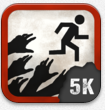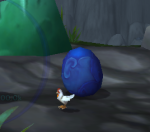 Virtual Word interaction can be mobile and active. Businesses across the country are recognizing that employee fitness contributes to better attendance associated with reduced sick days, reduction in health benefit costs, and an increase in work product. Mobile applications can contribute to this end. My work place has started an informal “walking club”, we walk for 15-30 minutes during our lunch hour and track all our steps daily. One of our Director’s actually holds “walking meetings” scheduling times for staff to walk and discuss instead of sitting around a conference table.
Virtual Word interaction can be mobile and active. Businesses across the country are recognizing that employee fitness contributes to better attendance associated with reduced sick days, reduction in health benefit costs, and an increase in work product. Mobile applications can contribute to this end. My work place has started an informal “walking club”, we walk for 15-30 minutes during our lunch hour and track all our steps daily. One of our Director’s actually holds “walking meetings” scheduling times for staff to walk and discuss instead of sitting around a conference table.
Multiple applications and devices are available to help individuals track their distance, steps, times, calories burned etc. I find that walking with colleagues provides a network and support group that is motivating and, well, fun. If you do not have interested individuals around you, you can find them via the games/apps or just connect with distanced friends to get fit together.
 A Game-based application with an element of immersion is Zombies Run. It is billed as an “audio adventure” in preparing you for a 5K. I first read about this application in Jane McGonigals’s book Reality is Broken, as she discussed Alternative Reality Games (ARGs). The objective of this game is to prepare you for a 5 K run and gradually increases your stamina as you level up with walking and running as zombies chase you. The runner/walker has “missions” requiring running and walking to save people, deliver emergency supplies and to escape the ever-present zombies. Between the storyline you listen to your favorite playlist, earbuds are a good idea. The one change I would make to the game is to use the participant’s actual geo-location to make it more immersive (Zombies jumping out around the corner of your home or workplace). Although the objective of this game is a 5K preparation it is a fine as a fun way to exercise and build stamina. Completing the game gives a sense of accomplishment, even if you never run in a 5K.
A Game-based application with an element of immersion is Zombies Run. It is billed as an “audio adventure” in preparing you for a 5K. I first read about this application in Jane McGonigals’s book Reality is Broken, as she discussed Alternative Reality Games (ARGs). The objective of this game is to prepare you for a 5 K run and gradually increases your stamina as you level up with walking and running as zombies chase you. The runner/walker has “missions” requiring running and walking to save people, deliver emergency supplies and to escape the ever-present zombies. Between the storyline you listen to your favorite playlist, earbuds are a good idea. The one change I would make to the game is to use the participant’s actual geo-location to make it more immersive (Zombies jumping out around the corner of your home or workplace). Although the objective of this game is a 5K preparation it is a fine as a fun way to exercise and build stamina. Completing the game gives a sense of accomplishment, even if you never run in a 5K.
 A number of free or inexpensive gamified applications can be downloaded to your mobile device to make excercise a social and fun experience. Some are Steps Mania, STRAVA, Earndit (Allows you to redeem earned points for prizes and charities), run keeper, iSmoothrun, and Fitocracy. These applications track walking, running swimming and biking distance (check them out to see which does what), exercises, date and time, and then reward achievements based on progress. Achievements are scaffolded, guiding the participant to “level-up” by increasing the duration and frequency of exercise. The apps all use graphs and leaderboards providing personal data to compete with yourself or with colleagues. Though less immersive than Zombies Run, they do have a social aspect. Your fitness friends can be located anywhere in the world and can complete their fitness routine on their timezone while networking with remotely located friends. Some are designed to track every step you take while others are designed for specific workout sessions and they can all bring a playing feel to your workout.
A number of free or inexpensive gamified applications can be downloaded to your mobile device to make excercise a social and fun experience. Some are Steps Mania, STRAVA, Earndit (Allows you to redeem earned points for prizes and charities), run keeper, iSmoothrun, and Fitocracy. These applications track walking, running swimming and biking distance (check them out to see which does what), exercises, date and time, and then reward achievements based on progress. Achievements are scaffolded, guiding the participant to “level-up” by increasing the duration and frequency of exercise. The apps all use graphs and leaderboards providing personal data to compete with yourself or with colleagues. Though less immersive than Zombies Run, they do have a social aspect. Your fitness friends can be located anywhere in the world and can complete their fitness routine on their timezone while networking with remotely located friends. Some are designed to track every step you take while others are designed for specific workout sessions and they can all bring a playing feel to your workout.
How Regular Exercise Help You Balance Work and Family
Exercise Boosts Work Productivity












